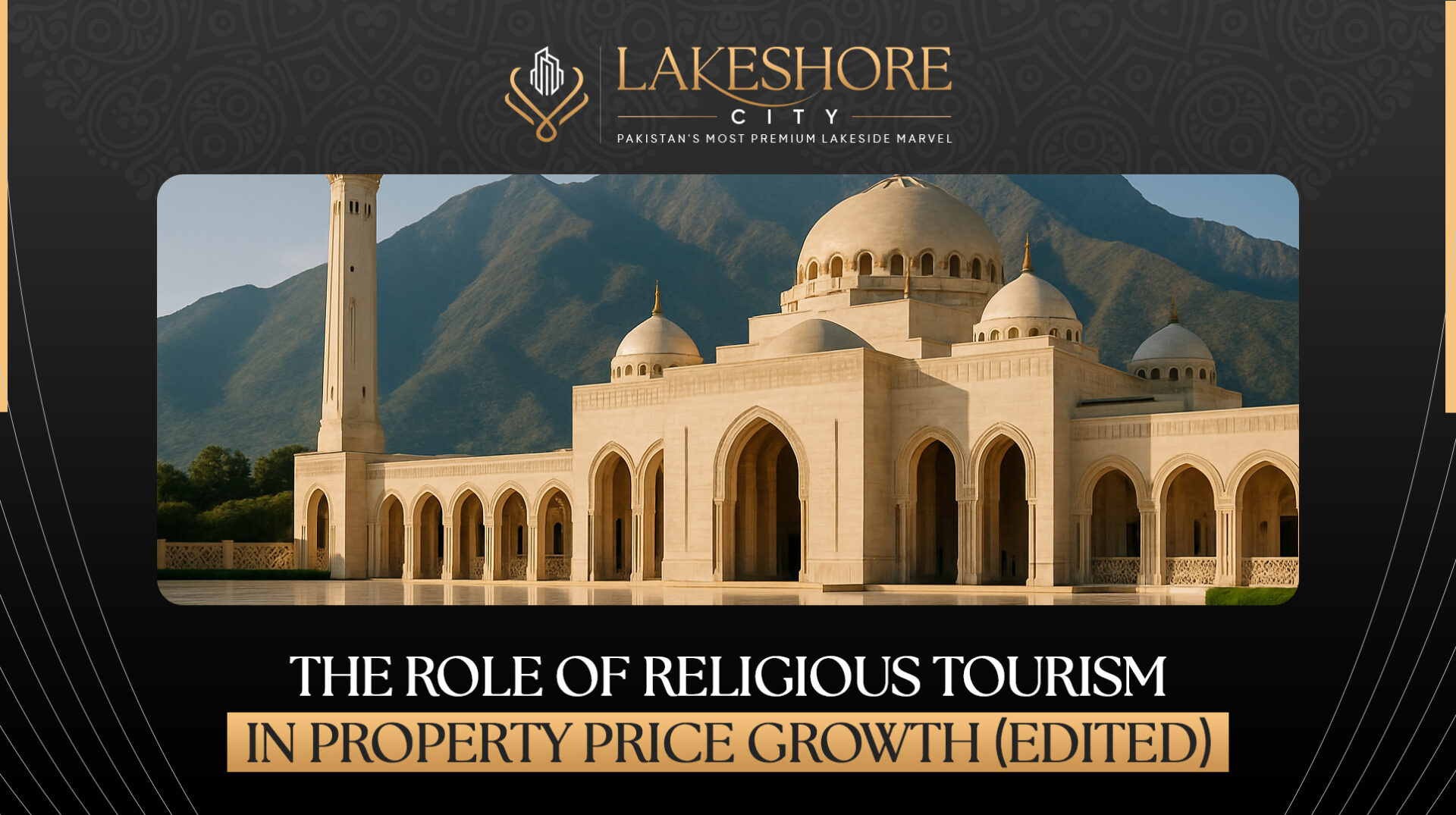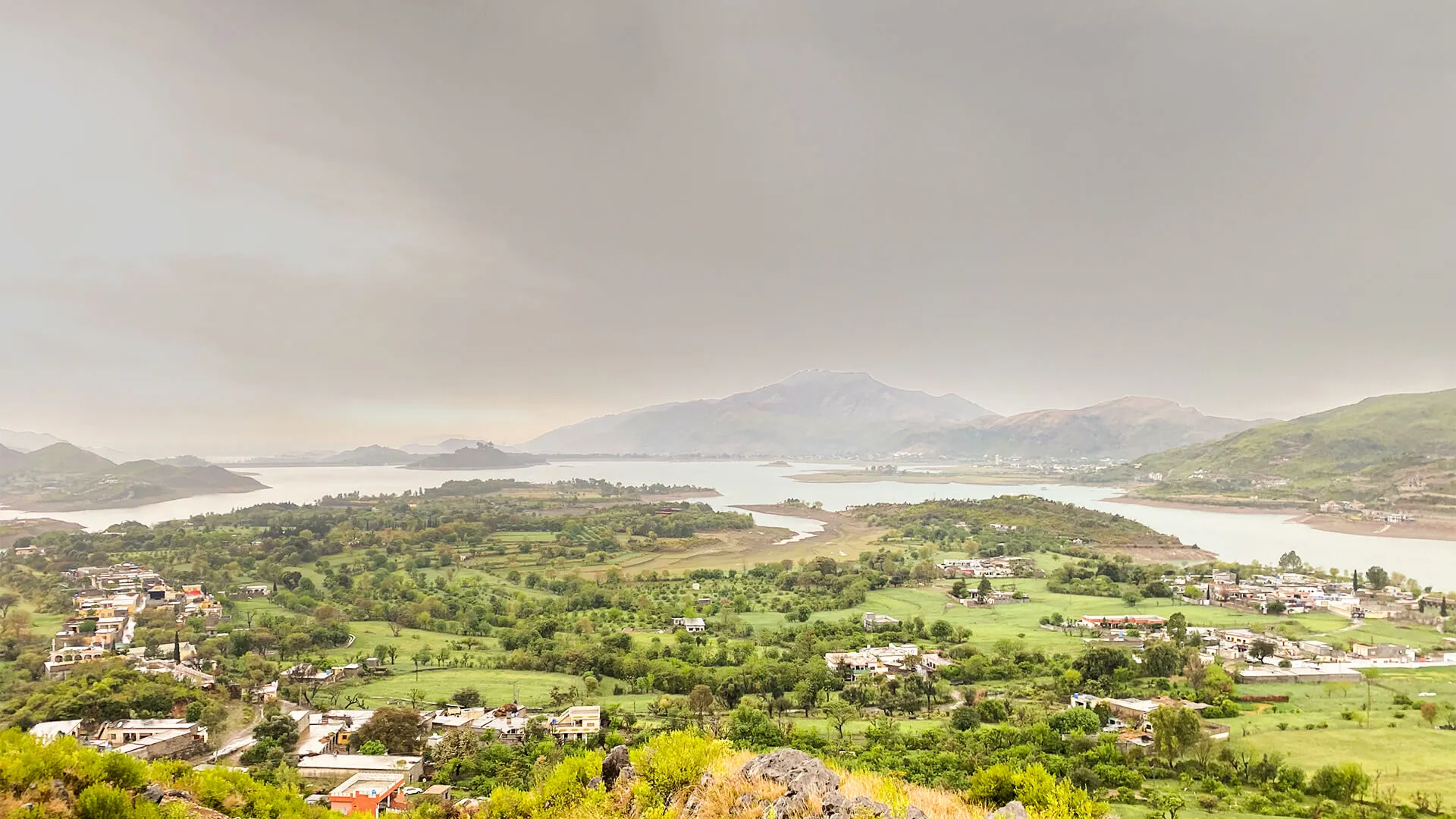Religious tourism is a hidden engine of real estate growth in Pakistan. Every year, millions of pilgrims travel to shrines, gurdwaras, mosques, and ancient Buddhist sites. These visitors bring economic activity, create demand for facilities, and indirectly raise land values. Investors who focus on property near religious pilgrimage sites in Pakistan are already seeing higher returns compared to areas without tourism potential.
In this blog, we will explore the deep link between religious tourism and real estate, showing how faith, culture, and investment intersect to create strong opportunities.
Religious Tourism in Pakistan
Pakistan is blessed with a diverse religious heritage that reflects centuries of civilizations, faiths, and cultures. From the Buddhist Gandhara civilization in Taxila to Sufi shrines across Punjab and Sindh, to Sikh holy sites in Punjab, the country holds enormous tourism value. Each faith tradition contributes to Pakistan’s identity as a land of spiritual journeys, and each site has its own influence on local economies and property growth.
Buddhist Sites
Taxila
Taxila, a UNESCO World Heritage Site, is one of the world’s most important archaeological cities. Once a thriving center of Buddhist learning and trade, it now attracts international researchers, Buddhist pilgrims from East Asia, and tourists eager to explore Gandhara art and culture. The growing influx of visitors has encouraged local businesses, hotels, and even modern housing societies to expand near the site.
Takht-i-Bahi
Takht-i-Bahi in Khyber Pakhtunkhwa is another UNESCO-protected Buddhist monastery. Its hilltop ruins, dating back to the 1st century CE, receive thousands of visitors annually. The road network and infrastructure improvements around Takht-i-Bahi have increased the demand for land, both for tourism facilities and residential developments.
Also Read: How Access to Healthcare Increases Property Value
Butkara Stupa
Located in the Swat Valley, the Butkara Stupa is another key Buddhist heritage site. Pilgrims and researchers frequently visit, especially during the tourism season in Swat. Land values in nearby Mingora and Saidu Sharif have increased as demand grows for hotels, cultural centers, and improved residential options to accommodate visitors and staff.
Impact on Real Estate
The steady flow of international tourists to Buddhist sites creates consistent demand for accommodation and commercial ventures. This directly fuels real estate growth near shrines in Pakistan, particularly in Taxila and Swat. Investors see these regions as long-term opportunities.
Sikh Sites
Kartarpur Corridor
Kartarpur Sahib in Narowal is one of Sikhism’s holiest sites, as it is where Guru Nanak spent his final years. The opening of the Kartarpur Corridor in 2019 transformed the area into an international tourism hub, allowing thousands of Sikh pilgrims from India to visit without visas. Since then, property prices around Narowal and nearby districts have climbed, as hotels, restaurants, and shops sprang up to serve pilgrims.
Nankana Sahib
Nankana Sahib, the birthplace of Guru Nanak, attracts Sikh pilgrims from around the world every year. The city has seen steady government investment in infrastructure, such as roads and accommodation facilities. This has triggered rising land demand not only for religious tourism but also for residential colonies catering to visitors and diaspora families.
Gurdwara Panja Sahib
Located in Hassan Abdal, Panja Sahib holds immense religious importance for Sikhs. Pilgrims traveling here often stay in surrounding towns and cities, creating steady hospitality demand. The close proximity to Islamabad makes it even more attractive for investors looking to buy plots or establish commercial enterprises.
Impact on Real Estate
Sikh tourism brings international currency inflows, boosting both hospitality and real estate sectors. The consistent arrival of pilgrims creates high rental yields, pushing up commercial and residential land prices near Sikh heritage sites.
Sufi Shrines
Data Darbar (Lahore)
One of South Asia’s most visited shrines, Data Darbar sees millions of visitors annually. Its location in Lahore, a thriving urban hub, adds to the commercial and residential growth of the surrounding areas. Guesthouses, eateries, and even small retail businesses thrive in its vicinity, which directly reflects in rising property rates.
Lal Shahbaz Qalandar (Sehwan Sharif)
Sehwan Sharif in Sindh is globally famous for the shrine of Lal Shahbaz Qalandar. The annual Urs attracts pilgrims in the hundreds of thousands. This massive influx of devotees generates seasonal peaks in real estate demand, hotels, lodges, and commercial outlets see booming business, leading to higher land values.
Bahauddin Zakariya (Multan)
Known as the “City of Saints,” Multan is home to the shrine of Bahauddin Zakariya, along with many other Sufi saints. The constant stream of local and international visitors has created thriving tourism and hospitality businesses. The growing middle class in Multan has also fueled housing projects, giving the city strong real estate growth potential.
Impact on Real Estate
Sufi shrines create an all-year demand cycle, unlike seasonal tourism. This means property values around shrines in Lahore, Sehwan, and Multan remain consistently high. Commercial plots, rental apartments, and hospitality ventures near these shrines are especially profitable.
Overall Outlook
Whether it’s Buddhist, Sikh, or Sufi landmarks, religious tourism ensures steady property demand. These sacred sites not only preserve cultural identity but also create opportunities for investors and developers. The impact of religious tourism on land prices in Pakistan is strongest in regions where international pilgrims visit frequently, as they bring both economic activity and global visibility.
The Economic Ripple Effect of Pilgrimage
Religious tourism does not benefit only transport or hospitality. It has a direct impact on real estate growth near shrines in Pakistan. The reason is simple: every pilgrim needs food, shelter, and services. What starts as temporary demand during festivals often evolves into long-term infrastructure and property development.
Hospitality Demand
Whenever a shrine or religious site attracts thousands of visitors, accommodation becomes the first priority. Hotels, guesthouses, and lodges spring up to serve this demand. In areas with limited hospitality infrastructure, landowners often convert homes into rental spaces, generating high short-term profits.
- Rental Apartments: Pilgrims who prefer affordable stays rent small apartments near shrines. This trend boosts demand for residential units.
- Guest Houses: Local investors frequently establish small guesthouses, which remain booked during pilgrimage seasons.
- Luxury Hotels: In major cities like Lahore, Multan, and Islamabad (close to Hassan Abdal), luxury hotels benefit from international tourists who demand higher standards.
As demand rises, so does land value, making hospitality one of the strongest drivers of local property price growth.
Food and Retail
Pilgrims do not just visit shrines; they also spend money on food, shopping, and local products. This creates a booming retail ecosystem.
- Restaurants & Cafes: Small eateries near shrines quickly turn into high-income businesses.
- Street Vendors: Local food stalls, handicrafts, and souvenir shops thrive, requiring rental spaces or permanent shops.
- Markets & Bazaars: Entire markets often grow around shrines, pushing up the value of commercial plots.
For investors, this means commercial land near religious sites can provide exceptional returns, especially when leased to food and retail businesses.
Transport Hubs
Religious tourism often brings government-backed improvements in transport infrastructure. To facilitate visitors, roads are widened, bus stands are upgraded, and sometimes new airports or rail links are developed.
- Road Networks: Better highways connecting cities to shrines increase accessibility and boost land prices along these routes.
- Public Transport: New bus services and terminals create micro-markets where property demand increases rapidly.
- Parking Spaces: In busy pilgrimage zones, parking areas themselves become valuable property assets.
Transport hubs not only benefit tourists but also create long-term advantages for local communities, which is reflected in continuous real estate appreciation.
Residential Zones
Pilgrimage sites are not just destinations, they become living communities. Workers, vendors, hoteliers, transport providers, and their families move closer to shrines to reduce travel costs and access daily business opportunities.
- Low-Cost Housing: Affordable residential projects emerge to house workers and service providers.
- Middle-Class Colonies: Business owners, hotel managers, and shopkeepers demand mid-range homes close to their work.
- High-End Villas & Apartments: In cities like Lahore and Multan, upscale housing is also built near shrines to serve diaspora families and affluent visitors who want longer stays.
This continuous migration creates a stable demand for residential plots, ensuring that land prices remain on an upward trend.
A Self-Sustaining Cycle
What makes pilgrimage-driven growth unique is its self-sustaining nature. Unlike seasonal tourism, religious tourism happens year-round. Devotees visit daily, weekly, and during annual festivals, which ensures steady demand. This constant flow guarantees long-term appreciation in property values, making investment near shrines one of the most secure opportunities in Pakistan’s real estate sector.
Government Initiatives Driving Growth
The government of Pakistan is now actively promoting religious tourism. Some major initiatives include:
- Visa-on-arrival and e-visa services for foreign tourists.
- Restoration projects for ancient Buddhist and Hindu temples.
- Improved connectivity, such as highways leading to shrines.
- Collaboration with UNESCO to protect and promote heritage sites.
These initiatives boost investor confidence. When infrastructure improves, property near these areas appreciates quickly, creating golden opportunities for investors.
Why Investors Should Consider Pilgrimage Zones
Investing near pilgrimage zones is more than just cultural interest. It offers practical financial advantages.
- High rental income: Pilgrims need short-term stays, boosting demand for guesthouses.
- Business growth: Shops, restaurants, and hotels raise the value of commercial property.
- Stable demand: Unlike seasonal tourism, religious tourism happens all year round.
- Resale value: Investors often enjoy higher resale profits due to continuous appreciation.
For these reasons, housing societies with high ROI in Pakistan often develop close to religious or cultural hubs.
The Future of Religious Tourism and Real Estate
With Pakistan opening its doors to more international pilgrims, the link between faith and real estate will grow even stronger. Analysts predict that areas near shrines will experience faster price hikes than traditional housing markets. Developers are already planning new projects near cultural and religious hubs to benefit from this rising demand.
Conclusion
The relationship between religious tourism and property price growth in Pakistan is clear. Pilgrimage sites create economic activity, and economic activity raises land demand. From Kartarpur to Taxila, from Multan to Sehwan Sharif, every sacred site fuels real estate appreciation.
For investors, the smart move is to focus on property near religious pilgrimage sites in Pakistan. With government support, rising visitor numbers, and projects like Lakeshore City, this trend is only going to strengthen in the years ahead.
FAQs
Q1: Why does religious tourism increase property prices?
Pilgrims create demand for hotels, restaurants, and services. This demand pushes up land prices in surrounding areas.
Q2: Which religious sites affect real estate the most?
Sites like Kartarpur Corridor, Taxila Buddhist remains, Multan shrines, and Sehwan Sharif have the strongest impact on property demand.
Q3: Is property near shrines a good investment for small investors?
Yes, even small investors can benefit by buying affordable plots near these areas. They provide rental income and strong resale value.
Q4: What role does the government play in boosting religious tourism?
The government restores heritage sites, improves infrastructure, and promotes religious tourism internationally, which raises investor confidence.
Q5: What is the ROI potential near religious tourism hubs?
ROI is higher than in many traditional markets because demand from pilgrims is continuous and not limited to a single season.



